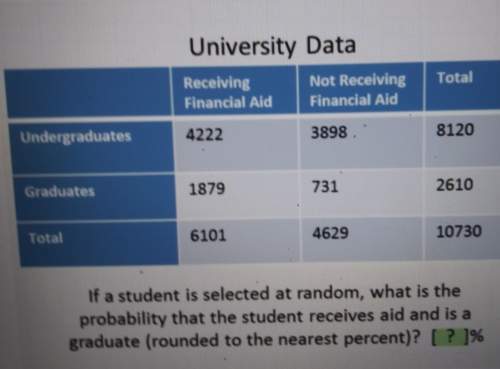
Mathematics, 01.08.2019 04:20 Seaisnowblue
Suppose a geyser has a mean time between eruptions of 76 minutes. let the interval of time between the eruptions be normally distributed with standard deviation 27 minutes. (round everything to four decimal places)(a) what is the probability that a randomly selected time interval between eruptions is longer than 87 minutes? (b) what is the probability that a random sample of 14 time intervals between eruptions has a mean longer than 87 minutes? (c) what is the probability that a random sample of 26 time intervals between eruptions has a mean longer than 87 minutes? (d) what effect does increasing the sample size have on the probability? fill in the blanks with either increases or decreases. if the population mean is less than 87 minutes, then the probability that the sample mean of the time between eruptions is greater than 87 minutes because the variability in the sample mean as the sample size .(e) what might you conclude if a random sample of 26 time intervals between eruptions has a mean longer than 87 minutes? choose the best answer. a. the population mean must be more than 76, since the probability is so low. b. the population mean is 76, and this is an example of a typical sampling result. c. the population mean must be less than 76, since the probability is so low. d. the population mean may be greater than 76.

Answers: 2


Another question on Mathematics

Mathematics, 22.06.2019 00:20
Abag contains pieces of paper numbered from 5 to 9. a piece of paper is drawn at random. what is the theoretical probability of drawing a number less than 8?
Answers: 1

Mathematics, 22.06.2019 02:30
Aresearch study is studying the effects of a new drug for osteoporosis alzheimer's disease (ad) for women above the age of 65 years. a group of individuals with osteoporosis is randomized into two groups. one group is treated conventionally, and the second group is treated with the new medication. assessments are made at 3, 6, 12, 36, and 48 months. the conventionally treated group is assessed for ad using a serum blood test, and the treatment group is assessed for ad using a pet radiotracer that binds to beta-amyloid plaques. in comparing these 2 trial arms, the authors of the study may encounter which type of bias? a. selection bias on the risk of developing b. measurement bias c. confounding bias d. recall bias e. lead-time bias
Answers: 2

Mathematics, 22.06.2019 04:30
Every night nathan has to read for at least 25 minutes write and inequality that shows how long nathan can read each night
Answers: 1

Mathematics, 22.06.2019 06:00
Kaley cuts half of a loaf of bread into 4 equal parts. what fraction of the whole loaf does each of the 4 parts represent?
Answers: 2
You know the right answer?
Suppose a geyser has a mean time between eruptions of 76 minutes. let the interval of time between t...
Questions























